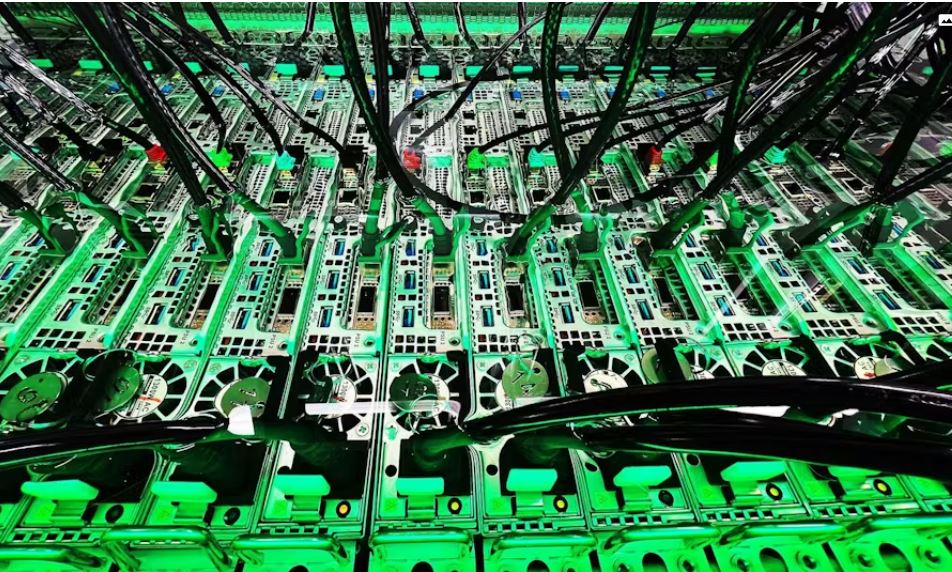The increasing demand for energy-efficient and sustainable solutions in the IT industry has given a boost to the immersion cooling market. Immersion cooling involves submerging electronic components in thermally conductive liquids. It offers several advantages over traditional air cooling methods.
As industries continue to face pressure to reduce energy consumption and carbon footprints, immersion cooling is emerging as a game-changing solution. The technology shows a 50% reduction in energy consumption and around 70% reduction in the space occupied. Due to the rising applications in data centers and HPCs (High-Performance Computing), the global market for immersion cooling is expected to cross USD 1 billion by the year 2030. Here, we will try to understand what are the growth drivers of this industry.
- Demand for Energy Efficiency and Sustainability: As global energy consumption increases, industries are seeking more efficient and sustainable ways to cool their high-density computing systems. Traditional air cooling methods often require large amounts of energy to power fans and air-conditioning systems, leading to higher operational costs and a larger carbon footprint. Immersion cooling, by contrast, reduces the need for fans and other energy-intensive components, making it a more energy-efficient solution.
Immersion cooling systems use a thermally conductive liquid that absorbs the heat generated by the hardware. The heat is then dissipated through a heat exchanger, which is far more efficient than air cooling. This results in reduced energy consumption, lower cooling costs, and a smaller environmental footprint, all of which are crucial as data centers continue to grow in scale. Companies such as LiquidStack and Submer are at the forefront of developing immersion cooling technologies. Their systems are being implemented in large-scale data centers, with a notable example of The European Organization for Nuclear Research (CERN). With immense data processing and storage requirements, CERN’s move to immersion cooling has helped optimize the performance and reliability of its systems.
- Demand for High-Performance Computing (HPC): As industries such as artificial intelligence (AI), scientific research, and blockchain grow, the need for high-performance computing (HPC) has skyrocketed. HPC systems typically generate a significant amount of heat due to the high processing power required for these advanced tasks. Traditional cooling systems struggle to keep up with the heat output of these systems, making immersion cooling an increasingly attractive solution.
Immersion cooling can handle higher heat loads and maintain optimal operating temperatures for powerful processors and GPUs, making it ideal for HPC environments. By reducing the risks of overheating and improving the longevity of hardware, immersion cooling offers substantial benefits for industries relying on HPC.
- Technological Advancements in Immersion Cooling: Advancements in materials science and cooling technology have greatly improved the effectiveness of immersion cooling solutions. The development of non-conductive, dielectric fluids, which do not short-circuit electronic components, has been a major breakthrough. These fluids offer superior thermal conductivity, ensuring that heat is transferred efficiently without compromising the integrity of the equipment.
For instance, Green Revolution Cooling, a leading provider of immersion cooling systems, has developed an innovative approach called HashRaQ MAX. The next-gen solution tackles the extreme heat loads generated by crypto mining.
- Cost Reduction and Long-Term Savings: While the initial investment in immersion cooling technology may be higher than traditional cooling systems, the long-term operational savings can be significant. Lower energy consumption, reduced cooling infrastructure, and improved hardware longevity lead to cost reductions over time. For businesses running large data centers, this can result in substantial savings in both energy costs and maintenance.
As governments enforce stricter environmental regulations and organizations strive to meet sustainability goals, the push for “green” data centers has become stronger. Immersion cooling is an environment-friendly alternative that significantly reduces the carbon footprint of data centers by minimizing energy consumption. Immersion cooling solutions do not require large air conditioning units, reducing the need for refrigerants, which can have harmful effects on the environment. Furthermore, the liquid used in immersion cooling systems is often biodegradable and non-toxic, offering additional benefits for sustainability efforts.
Advancements in the integration of immersion cooling with liquid-to-liquid and liquid-to-air cooling systems have created hybrid solutions that maximize heat dissipation. These hybrid solutions provide even greater cooling efficiency and adaptability to different environmental conditions, making them ideal for various applications, from small-scale data centers to large enterprise-level deployments.
















